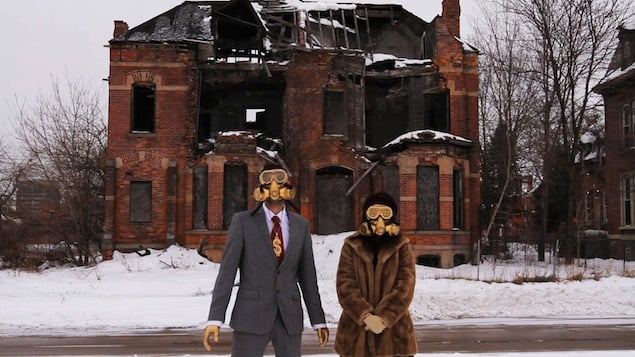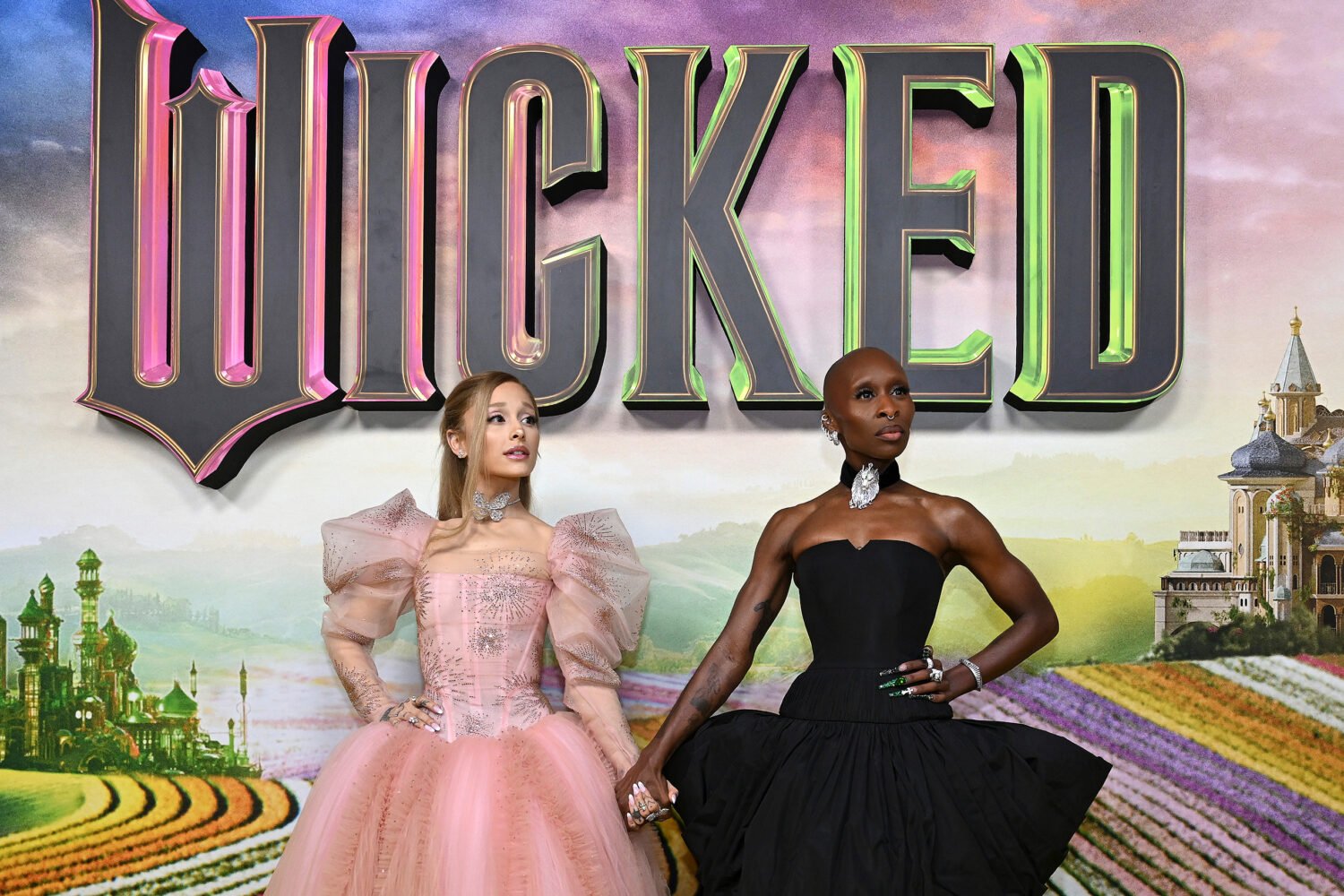Playing Friday, June 22, at 5 PM and Saturday, June 23, at 10:15 PM
Plenty of filmmakers have turned their cameras on New
Orleans in recent years, realizing that a unique American city was
almost
lost to nature. Given the forecast of less optimistic climate
change models, it could well be lost for good should the waters
rise up and take it back for the sea. Whether it’s Spike Lee’s incisive documentary
When the Levees Break or
David Simon and
Eric Overmyer’s blend of drama and cultural history in the HBO series
Treme, there’s something special about the city—in its
food, its music, its nonstop party vibe—that filmmakers are desperate
to
communicate. But for a city so sensuous, the two senses that
film reaches probably aren’t enough; for some things, you just
have to be there.
Tchoupitoulas, the new documentary from directors
Bill
and
Turner Ross, may come as close as is possible
to replicating the experience of a night spent walking the streets of
New Orleans. That’s
because that’s essentially all that the film does. The Rosses
take three adolescent brothers who live just a ferry ride away
from the French Quarter and follow them as they go on a
nighttime trip through the city after they miss their ferry home.
Those wanting to adhere to strict observational standards
for documentary film might balk up front, pointing out that in an
absolute real-world situation, the filmmakers wouldn’t know
that the boys were going to miss the ferry, and if they didn’t
miss it, there would be no film to follow; surely, then, that
must have been staged. My response is: Who cares? All documentaries
work on a sliding scale of truth, most of it created in the
editing suite. The filmmakers’ decision to capture the city using
the wandering trail of the boys as their guide is a stroke of
genius.
And wander they do, from street musicians to burlesque
clubs to pizza shop windows to jazz joints to abandoned ferryboats.
This is an impressionistic take on New Orleans, with no
narrative apart from the path through the night. Their camera lingers
at this bar or that club watching performers and revelers going
about their nightly routine. In between, the boys walk, or
there’s a transition of blurred lights as the camera slowly
pans, out of focus, across the twinkling lights of the city.
Shooting in what sometimes approximates a semi-inebriated haze, and emphasizing the overlapping of diverse sounds coming from
different quarters,
Tchoupitoulas almost does manage to transcend the
sight and sound limitations of cinema. This is a film that nearly
achieves tactile sensation;
you can virtually taste the pizza they watch being made through
the window and smell the sweat of the performers on stage.
There still may be nothing quite like being there, but a
portrait this vivid nearly re-creates the experience.
—IAN BUCKWALTER
Playing Thursday, June 21, at 7:30 PM and Friday, June 22, at 10:30 AM
If it’s an uplifting film you seek, feel free to go ahead and skip
Detropia. Not that the movie doesn’t have its positive
attributes—it’s cinematically quite striking, the soundtrack is a great
mix
of old and new, and we meet some interesting characters along
the way—but there isn’t a whole lot of feel-good in this one.
Filmmakers
Rachel Grady and
Heidi Ewing, of
Jesus Camp fame,
expose the raw reality of Detroit’s current sad state with scene after
scene of bulldozed homes, vacant blocks, disenfranchised
auto workers, a desperate mayor and a sprinkling of locals to
lend just a touch of personal ennui. (George McGregor, the president of Local 22 UAW
union, has an almost heart-wrenching optimism about the state of his
beloved industry—it’s
like watching the captain of a sinking ship tell everyone
things are going to work out just fine as the vessel disappears
below the sea.)
Yes, Detroit is in a sorry state—actually, check that.
It’s a cautionary tale of what happens at the edge of the economic
abyss, a harbinger of worst-case-scenario cause and effect.
It’s bad. Real bad. Facts about shrinking population and lost
jobs flash on the screen in tiny print from time to time,
alerting the viewer to just how untenable things have gotten, as
if the gritty, color-saturated Instagram style of the film’s
aesthetic weren’t enough to drive the point across. We see the
mayor feebly attempt to put forth a consolidation plan to
relocate thousands of residents from now near-vacant neighborhoods
to more urban areas in order to condense services and
marginalize costs. Residents, naturally, revolt. Despair takes over.
In one scene, Tommy Stevens, who runs the once-hopping
juke joint the Raven and now serves as owner, short-order cook, host,
and spirit of the place, takes us on a few happy strolls down
memory lane, retelling the good times. It’s a hard thing to
take, especially considering once Stevens is gone, the Raven
will be gone, too. It’s a story happening all over the place
in Detroit; the rest of America may have gotten a recession,
but the Motor City got a straight-up depression.
Detropia is an important film, and its message is
succinct: Don’t do this, don’t become this, don’t wish this on your
worst enemy.
But there’s so little in the way of optimism, so few signs of
what the future might hold, that you leave wishing the filmmakers
had put in just one or two rays of hope, or offered up a
potential path to recovery—something, anything—to spare us from the
bleak truth. Instead, like Detroit’s remaining citizens, we’re
left wondering how this thing is going to turn out.
—KATE BENNETT
Playing Friday, June 22, at 2:30 PM, and Sunday, June 24, at 5:15 PM
In 2010, the Metropolitan Opera premiered the first installment of director
Robert LePage’s groundbreaking production of Wagner’s
Ring Cycle, which played out over the course of the next two seasons with all four operas. Perhaps not since
Werner Herzog’s
Fitzcarraldo—which featured an attempt to build an
opera house in the middle of a Peruvian jungle, necessitating the
carrying of a 300-ton
riverboat up a mountain—has any attempt to put on an opera been
plagued by such adversity in the face of outsize ambition.
Of course,
Fitzcarraldo was fiction; LePage’s
Ring was real.
Susan Froemke’s
Wagner’s Dream is a detailed look at the foibles and
frustrations involved in mounting a massive production that LePage
intended to match
Wagner’s own ambitions—never fully realized in his own life—to
put on a Ring Cycle that actually matched the grandeur of this
story of the Norse gods.
To that end, LePage starts with a set design that
consists of 24 massive, movable planks that can be swiveled and seesawed
into countless configurations. That set, dubbed “the machine”
by the production crew, must be operated by hand by more than
a dozen stagehands, has a tendency to lock up at inopportune
moments, and scares the living daylights out of performers not
particularly used to a performing experience that often
resembles rock climbing more than opera singing. Oh, and the thing
also weighs 90,000 pounds and requires the Met to reinforce the
concrete floor underneath the stage, lest the whole thing
go crashing through to the basement.
Much of the film plays like an extended making-of
documentary of the sort you might expect to find as a DVD extra for a
movie.
Which is to say it can be fascinating stuff, but not always
entirely memorable on its own, especially at a slightly overlong
running time of just under two hours. The first hour here is
the most fascinating, as Froemke details the nuts and bolts of
getting this massive undertaking off the ground. Once we get
past the opening night of
Das Rheingold, the first opera in the cycle—which features a disastrous failure of the machine during the opera’s key final moments—things
start to get repetitive.
There are three more operas to stage, but not much new information to convey. The problems continue—the show’s Brünnhilde
falls off the machine during the opening night of
Die Walküre, and the production loses its Siegfried mere days before the premiere of the show that bears his name—but the documentary
at this point is just going through the motions, showing essentially the same thing three more times.
What’s more interesting is the information at the
fringes of this film about the very future of opera. Froemke interviews
fans, many of whom are not so thrilled with this thoroughly
modern and flashy staging, and an astute usher articulates the
problem plaguing every opera and orchestra in the country:
Older patrons have no interest in change, and younger ones have
no interest in the same old productions. Froemke creates the
perception that this
Ring is a triumph and a step forward, as she interviews thrilled younger patrons after the concluding
Götterdämmerung. Whether LePage’s production is the leap forward opera needs is up for plenty of debate, and despite its own somewhat stodgy
traditionalism as a documentary,
Wagner’s Dream does at least contribute to that debate.
—IAN BUCKWALTER

















